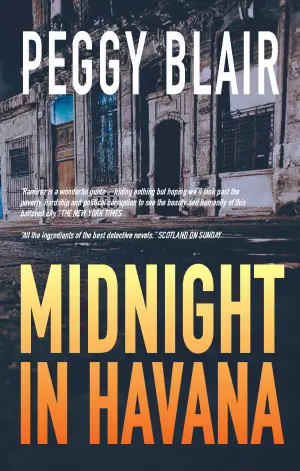Engaging with the Depths of Despair and Hope in The Drowning Woman
Have you ever picked up a book that so perfectly encapsulates the fragility of life, the twists of fate, and the complexities of human connection? Robyn Harding’s The Drowning Woman managed to pull me in like a riptide, and I can’t help but share my journey through its poignant pages.
Set against the backdrop of a pandemic-stricken New York City, The Drowning Woman introduces us to Lee Gulliver, a woman whose dreams are as shattered as the restaurant industry she once thrived in. Homeless and navigating the harsh realities of life in her car, Lee’s grit is palpable. It’s hard to not immediately sympathize with her plight; Harding skillfully evokes the fragility of stability, showcasing how swiftly everything can change. When Lee saves Hazel, a woman desperate to escape her abusive marriage, the unlikely bond between them begins to unfold, revealing layers of pain, resilience, and unexpected connection.
The book’s themes of desperation and survival resonate deeply. As Lee and Hazel navigate their respective hells, I found myself reflecting on the various forms of imprisonment we endure. Harding navigates this delicate territory with finesse, making their stories feel authentically intertwined rather than contrived. While their worlds initially seem irreconcilable, their bond becomes a lifeline, showcasing the transformative power of human connection.
At first glance, the pacing feels more like a slow burn, and I found myself immersed in the drama of their daily routines. It was a welcome change that allowed me to become invested in their struggles. As I forged deeper into the book, those slow moments later evolved into nail-biting suspense, particularly when the twists began to flourish. The alternating perspectives kept me on my toes, with each reveal peeling back the layers of mistrust and shared trauma. I’ll admit, though, some of the revelations felt repetitive. Yet, this did little to detract from my overall engagement, as I eagerly anticipated each shocking twist.
When those twists hit, they hit hard. I found myself gasping at the unexpected turns, particularly one that is revealed about a third of the way through. It was as if Harding had expertly set up a domino effect that I could never have predicted. But as thrilling as the build-up was, I felt a twinge of disappointment in the pacing of the climax. The last twenty pages felt rushed, leaving me a bit unsteady. Still, once I surrendered to the ride, accepting the book’s darker, improbable elements, the ending unfolded in a way that lingered in my mind—almost a bittersweet symphony of resolution.
The Drowning Woman is a must-read for anyone who enjoys psychological thrillers with a deeply human core. If you’ve found yourself captivated by stories of resilience, complexity, and the relationships that shape us, this novel is your next obsession. It’s a haunting and thrilling exploration of what it means to survive, built on the premise that sometimes we all need help to escape our prisons, be they emotional or physical. I finished the book contemplating my own perceptions of trust and vulnerability. It’s a reading experience that stays with you long after you’ve turned the final page.
So, grab your copy and prepare for an unforgettable journey through the depths of despair—just don’t forget to breathe along the way.














